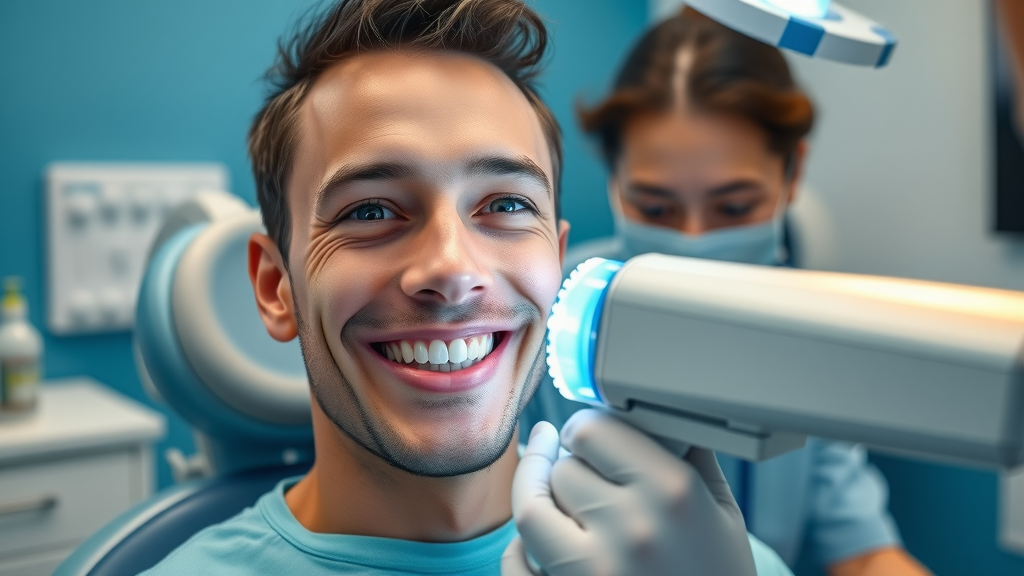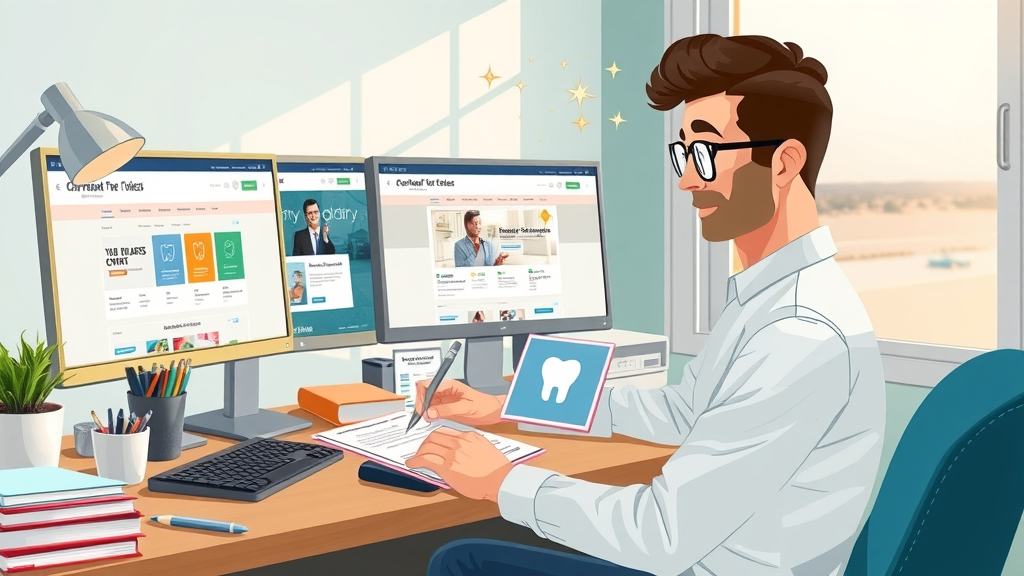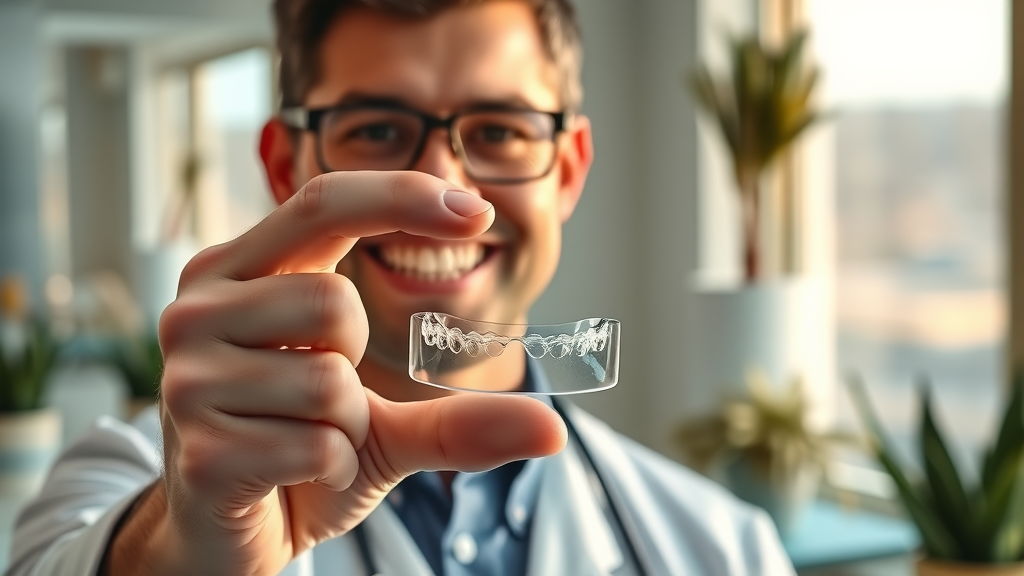Did you know that Invisalign costs in Myrtle Beach SC can range anywhere from $2,500 to over $7,000, depending on your needs and clinic? If you’re curious about what goes into that number – and how to make the smartest investment – you’re in the right place. This guide cuts through confusing estimates and sales pitches to give you clear, real-world pricing, facts, and must-know steps for starting your Invisalign journey right here on the Grand Strand. Whether you want to straighten your teeth without anyone noticing or you’re comparing orthodontic treatment options for your family, understanding Invisalign costs in Myrtle Beach SC is your first move towards a confident, healthy smile.
Startling Facts: Invisalign Costs in Myrtle Beach SC Revealed
What makes Invisalign costs in Myrtle Beach SC more surprising than you might expect? For one, the price can shift significantly based on your individual oral health, treatment plan, and the provider you select. Many locals believe that clear aligners are always more expensive than metal braces, but that’s not always true—especially when you factor in convenience, comfort, and shorter treatment time for suitable cases.
On the Grand Strand , orthodontic clinics report a typical range of $3,500–$7,000 for Invisalign clear aligners , aligning closely with national averages. Yet, the biggest cost surprises come from factors like the number of aligners needed, your treatment’s complexity, and whether you require additional dental care such as cleanings or x-rays. These nuances make it essential for patients to compare providers, discuss the entire process up front, and understand how dental insurance or payment options may offset costs. Myrtle Beach orthodontics has adapted to offer transparent pricing, courtesy consultations, and modern treatment technologies to keep patients informed.

What This Guide Delivers for Invisalign Costs in Myrtle Beach SC
Accurate Invisalign pricing in Myrtle Beach SC and real-world price ranges
Detailed factors impacting Invisalign treatment cost
Local payment options, insurance cover, and cost-saving tips
Clear comparison: Invisalign vs. other clear aligners and orthodontic treatment methods
What to expect before, during, and after getting Invisalign aligners
Current Invisalign Costs in Myrtle Beach SC: What Patients Report and Clinics Quote
Average Invisalign Costs in Myrtle Beach SC vs. National Average |
||
Treatment Level |
Average Cost (Myrtle Beach SC) |
National Average |
|---|---|---|
Mild (Express) |
$2,500 - $3,500 |
$2,800 - $4,000 |
Moderate |
$3,500 - $5,000 |
$4,000 - $5,500 |
Complex |
$5,500 - $7,000+ |
$5,500 - $8,000 |
All prices include: initial consultation, custom clear aligners, regular fittings, and retainer.
Many Myrtle Beach clinics provide free initial consultations , allowing patients to discuss options and see custom treatment plans before committing. On the Grand Strand, this transparency ensures you know exactly what you’re paying for. Some local clinics also include extras like digital scans and one set of post-treatment retainers in their quoted prices, minimizing hidden fees and making it easier to budget for your new smile.

What Influences Invisalign Costs in Myrtle Beach SC
Severity of case and treatment duration
Provider experience and location in Myrtle Beach
The number of Invisalign aligners required
Need for retainers or additional orthodontic treatment
Related dental procedures (cleanings, X-rays, extractions)
Invisalign Treatment Complexity and Its Cost Impact
One of the biggest factors affecting invisalign costs in Myrtle Beach SC is the complexity of your orthodontic treatment. Mild cases, like minor crowding or spacing, may only require a handful of clear aligners over a short treatment time—cutting costs significantly. Conversely, complex cases (such as severe bite misalignments or alignment corrections following gum disease or tooth decay) may require a longer treatment plan, more aligners, and closer orthodontic care. Your provider will assess your oral health, dental x-rays, and digital scans before giving a precise estimate.
Another key component is the experience and reputation of your selected provider. Providers specializing in Invisalign clear aligners, especially those with advanced technology or positive beach orthodontics reviews, may charge slightly more but offer added value like faster turnaround and fewer emergency visits. The number of aligners required, the necessity for related procedures (like cleaning or extractions), and whether you’ll need multiple retainers also contribute to total cost of treatment.
Lastly, the location of your clinic within Myrtle Beach and the Grand Strand can make a difference, as clinics in higher-demand areas or with advanced facilities might have slightly higher costs. However, their experience and efficiency can often save you money in the long run by reducing the risk of complications or the need for extended treatment plans.
How Invisalign Treatment Compares: Invisalign vs. Other Clear Aligners in Myrtle Beach
Cost Comparison: Invisalign, Other Aligners, and Braces in Myrtle Beach SC |
|
Treatment Type |
Average Cost (Myrtle Beach SC) |
|---|---|
Invisalign Clear Aligners |
$3,500 - $7,000 |
Other Clear Aligners |
$2,000 - $5,000 |
Traditional Braces |
$3,000 - $6,500 |
Ceramic Braces |
$4,000 - $7,500 |
When comparing orthodontic treatment types, Invisalign clear aligners offer a moderate price point on the Grand Strand, pricier than some clear aligner brands but often less expensive than ceramic braces. The benefit? Invisalign aligners offer a fully custom fit, smart tracking, and experienced local provider support for the entire process—making them the most popular choice for adults and teens seeking nearly invisible treatment. Traditional braces remain prevalent, especially for complex cases or those with tougher alignment issues but may not provide the same level of comfort, aesthetics, or flexibility.
The cost of treatment with other clear plastic aligners (often delivered remotely) can be attractive but rarely includes the same comprehensive provider oversight or emergency orthodontic care. For many in Myrtle Beach, it’s essential to weigh these savings against the risk of less predictable results or added oral health complications if gum disease or tooth decay is overlooked.

Why Choose Invisalign Clear Aligner Systems Over Competitors
Custom fit for optimal results
Trusted technology and unparalleled provider support in Myrtle Beach
Fewer emergency visits compared to traditional orthodontic treatment
"Our patients choose Invisalign for its convenience, comfort, and the predictability it guarantees with their smile—right here in Myrtle Beach." - Dr. Jenna Richards, Orthodontic Specialist
Invisalign clear aligners are considered the gold standard for discreet orthodontic treatment. Their advanced, FDA-approved materials, combined with AI-powered treatment planning, ensure every aligner precisely targets your specific dental issues. Myrtle Beach orthodontics clinics offering Invisalign usually have in-house care teams and real-time progress tracking, which can be ideal for busy families or working professionals. These systems are particularly recommended for patients seeking to straighten their teeth with minimal lifestyle disruption, as the aligners are removable and nearly invisible.
In contrast with other providers and clear plastic aligners purchased online, local Invisalign clinics in Myrtle Beach offer ongoing in-person support, troubleshooting, and a higher chance of catching and managing oral health concerns before they become problems. When considering the full journey, including aftercare and emergency visits, the value of Invisalign clear aligners paired with beach orthodontics expertise is tough to beat.
Payment Options and Insurance Cover for Invisalign Costs in Myrtle Beach SC
Monthly payment plans through finance providers
FSA and HSA payment flexibility
Dental insurance—what is commonly covered and what is not
In-house office discounts and special promotions
Paying for your Invisalign aligners doesn’t have to be overwhelming. Most Myrtle Beach orthodontic clinics offer generous payment plans that stretch the cost over 12-24 months with low or zero interest. If you participate in a health savings (HSA) or flexible spending account (FSA), those funds can help cover Invisalign costs tax-free, lowering your out-of-pocket investment. Many dental insurance plans now offer partial coverage for orthodontic treatment , but specific benefits for adult Invisalign cases can vary. It’s best to ask your clinic’s team for a pre-authorization check with your insurance plan before treatment begins.
Some clinics also provide direct discounts, price specials, or even price-match guarantees during certain times of the year. Don’t forget to ask about these options—they can save hundreds on the cost of treatment. These savings, combined with a clear understanding of your payment and insurance options, will set you up for a smooth and affordable Invisalign experience in Myrtle Beach.
How Dental Insurance Affects Invisalign Costs in Myrtle Beach
Dental insurance can make a big impact on invisalign costs in Myrtle Beach SC. Many insurance companies and employer-sponsored insurance plans treat Invisalign treatment as they would standard orthodontic care, covering a percentage up to a lifetime maximum. However, adult coverage may be more limited than child or teen plans, and some insurers view clear aligners as a “premium” or cosmetic upgrade.
It’s vital to review the fine print of any insurance cover you’re counting on. Some insurance cover will exclude clear aligners or cap the benefit lower than traditional braces. A reputable Myrtle Beach orthodontic office will help you navigate these details, obtain pre-authorizations, and maximize your reimbursement. Don’t let surprises derail your smile transformation—get clear on cost-of-treatment coverage before you begin.
Even if your insurance plan offers little or no Invisalign coverage, many providers work with industry lenders to offer extended payment options. Combining FSA/HSA funds, insurance cover (if available), and office discounts will give you the broadest range of payment choices possible.
Step-by-Step: The Invisalign Treatment Process in Myrtle Beach
Consultation and digital scan for Invisalign aligners
Custom clear aligners designed and produced
Regular appointments for progress checks throughout orthodontic treatment
Final fitting, smile reveal, and retainer instructions
Your Invisalign treatment in Myrtle Beach starts with a thorough consultation and a digital 3D scan of your teeth. This scan is painless and more precise than traditional impressions, ensuring your clear aligner trays fit like a glove. Top beach orthodontics clinics harness these scans to map out your custom treatment plan—predicting even the smallest of tooth movements.
Once your digital design is ready, your custom Invisalign aligners are produced and fitted. You’ll switch trays every one to two weeks and return for regular in-person appointments to monitor progress and oral health. The entire process typically lasts 6-18 months, depending on your case’s complexity and how diligently you wear your aligners (usually 20-22 hours each day).
At the end, you’ll have a final fitting and receive a post-treatment retainer to keep your new smile in place. The clinic will give full instructions for care and follow-up visits. This hands-on, step-by-step orthodontic treatment ensures you get the results you want—without the guesswork of online-only clear aligners.

Watch: Walkthrough of a Typical Invisalign Consultation in Myrtle Beach SC
Common Questions About Invisalign Costs in Myrtle Beach SC
How much does Invisalign cost in South Carolina?
Across South Carolina, Invisalign clear aligners usually cost between $3,500 and $7,000. The price depends on case complexity, geographic location (Myrtle Beach is on the higher end), and included extras like retainers or digital scans. Always get a detailed written estimate before beginning orthodontic treatment.
How much is 3 months of Invisalign?
If your provider offers a short-term “express” option, 3 months of Invisalign clear aligners can range from $2,000 to $3,500. This option is typically for mild cases only, where minimal movement is required, and may not include long-term retainers or extensive follow-up.
How much should I budget for Invisalign?
Budget a minimum of $3,500 to $7,000 for your entire Invisalign treatment in Myrtle Beach. Don’t forget to factor in retainers, any extra cleanings or procedures, and emergency orthodontic care if needed. Many patients successfully lower their out-of-pocket cost with payment plans, promotions, and insurance cover.
Is $7000 a lot for Invisalign?
$7,000 is on the higher end for Invisalign costs but may be appropriate for particularly complex orthodontic treatment or cases requiring extensive clear aligner therapy. Always compare several licensed providers, review estimates, and make sure your quote includes all expected services—not just the initial trays.
Top Tips for Getting the Best Price on Invisalign in Myrtle Beach SC
Compare several Myrtle Beach SC providers and ask about price-match guarantees
Check for seasonal promotions and local specials on Invisalign clear aligners
Review insurance cover, FSA/HSA options, and ask about monthly payment plans
One of the easiest ways to save is to compare detailed quotes from multiple beach orthodontics clinics. Ask about hidden costs, package deals, and whether your provider will match or beat a competitor’s price. Always inquire about insurance cover and how FSA/HSA funds can offset costs. Keep an eye on local advertising boards and websites for seasonal promos, referral bonuses, or complimentary first visits—these can add up to significant savings over your treatment time.
Transparency throughout the entire process is key: insist on a written treatment plan and clear payment options before starting. The most reputable Myrtle Beach orthodontics teams will be happy to provide these details, ensuring you never face financial surprises mid-treatment.

Expert Answers: FAQs on Invisalign Costs in Myrtle Beach SC
Are follow-up visits included in my Invisalign costs in Myrtle Beach SC? Most clinics bundle regular check-ups and minor adjustments into your original fee. Always clarify with your chosen provider for peace of mind.
Is Invisalign more expensive than standard clear aligners? Often, yes, but Invisalign’s added provider support, monitoring, and custom technology can be a better long-term value—especially for complex cases or those wanting direct professional oversight.
Are replacements for lost Invisalign aligners covered? Some Myrtle Beach clinics include 1-2 lost tray replacements, while others charge separately. Ask before starting, so you know what’s covered by your plan.
Will insurance cover emergency orthodontic treatment during Invisalign? Emergency care is sometimes covered if it’s deemed medically necessary. Discuss scenarios with your provider and have them check specifics with your insurance company.
Can I switch from braces to Invisalign in Myrtle Beach SC? Most clinics offer transition plans, but there may be additional costs and eligibility factors. Schedule a consultation to see if you’re a candidate and get a custom quote.
Important Details Before Your Invisalign Journey in Myrtle Beach SC
Choose a certified Invisalign provider with proven Myrtle Beach experience
Ask for a full treatment plan with transparent pricing
Understand your dental insurance coverage and payment options
Discuss post-treatment care and retainer costs up front
Before you begin, carefully research local orthodontic care teams, looking for experience with Invisalign clear aligners and positive patient reviews. Make sure you get a detailed, signed estimate and ask upfront about insurance, FSA/HSA billing, and long-term retainer maintenance. Don’t hesitate to ask about post-treatment costs and follow-up appointment schedules—these details are crucial for a stress-free orthodontic treatment journey.
By taking these steps, you put yourself in the best position to enjoy life-changing results with no financial surprises, especially with trusted Myrtle Beach orthodontics specialists who practice patient-centered care.

Ready for Your Smile Transformation? Get More Invisalign Insights for Myrtle Beach
The right Invisalign provider in Myrtle Beach can turn your dream of a straighter, healthier smile into reality—without breaking the bank. Want more expert-backed answers about braces, Invisalign, and local orthodontic care? Subscribe to Grand Strand Smile Spotlight and stay ahead of your smile journey.
Invisalign treatment in Myrtle Beach, SC, offers a discreet and comfortable way to achieve a straighter smile. Costs typically range from $3,500 to $7,000, influenced by factors such as case complexity, treatment duration, and the specific provider chosen. For instance, Dr. Jack Markusen notes that the severity of your individual case and the number of aligners required can significantly impact the overall cost. ( docmark.com )
Insurance coverage for Invisalign varies; many dental plans that cover traditional braces may also cover Invisalign, but it’s essential to verify with your provider. Additionally, financing options like CareCredit are available to help manage out-of-pocket expenses. ( cccrdentistry.com )
Choosing an experienced Invisalign provider is crucial for optimal results. Providers with higher experience levels may charge more, but their expertise can lead to more efficient and effective treatment outcomes. ( cccrdentistry.com )
In summary, while Invisalign in Myrtle Beach offers a flexible and less noticeable alternative to traditional braces, understanding the associated costs and available financial options is essential. Consulting with a local provider will provide a personalized estimate tailored to your specific needs.
 Add Row
Add Row  Add
Add 




Write A Comment